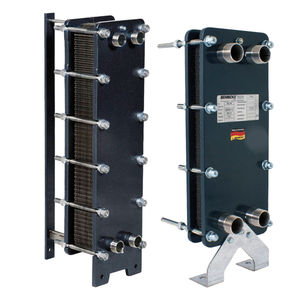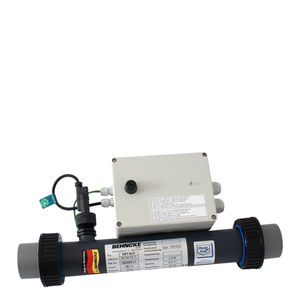
Liquid/liquid heat exchanger coppertitaniumhigh-temperature


Add to favorites
Compare this product
Characteristics
- Fluid
- liquid/liquid
- Material
- copper, titanium
- Other characteristics
- high-temperature
- Applications
- surface
Description
BEHNCKE COIL HEAT EXCHANGERS
WITH JACKET
The bestsellers
Here too, stainless steel (AISI 316) or titanium and Incoloy 825 are used for aggressive media. Countless customers worldwide rely on the following Behncke heat exchanger versions for a wide range of different applications:
the GIGANT 2000 has a stainless steel housing with welded-in heat transfer coil, complete with temperature sensor well, drain & venting valves and a stainless steel bracket for floor mounting, plus a copper antenna for connecting an electronic temperature sensor. The housings are pickled and lacquered and are therefore excellently suited for contaminated liquids such as sewage, machine oils, and many others.
The QWT 100 is a high-temperature heat exchanger consisting of stainless steel housing with welded-in heat transfer coil, complete with sensor well for installing an electronic temperature sensor, plus mounting bracket and rubber hose installation kit. Operating pressure: Coil 10 bar, housing 3 bar
The WTI 100 is practically identical to the QWT 100 high-temperature heat exchanger. The WTI 100 comes with a titanium housing with welded-in titanium heat transfer coil, lacquered surface, plus two PVC threaded couplings (DN 40/50) and is therefore ideally suited for use with aggressive liquids.
The SWT 100 is a low-temperature heat exchanger with the same product features as the QWT 100, including stainless steel housing and rubber hose installation kit.
Catalogs
No catalogs are available for this product.
See all of Behncke‘s catalogs*Prices are pre-tax. They exclude delivery charges and customs duties and do not include additional charges for installation or activation options. Prices are indicative only and may vary by country, with changes to the cost of raw materials and exchange rates.



